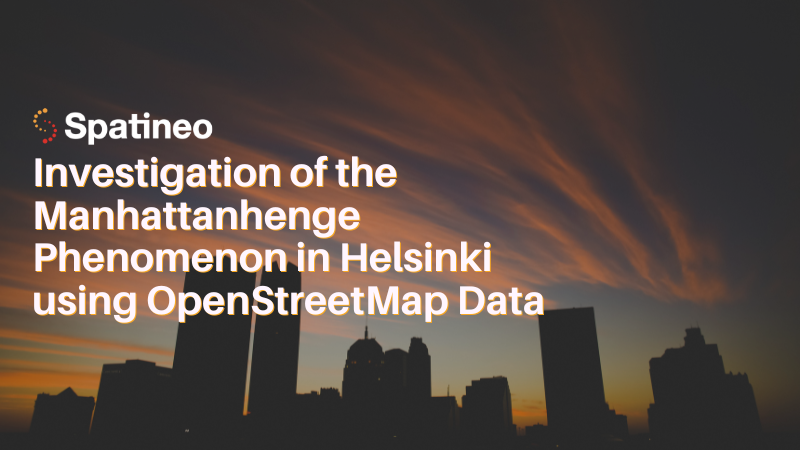Ilkka Kortelainen is a promising star in his career as a geoinformatics student at Aalto University. He worked the summer as an intern at Spatineo as a junior GIS-consultant. How did his summer go and what were the main lessons learned?

I arrived at Spatineo’s offices at the beginning of the summer with a fresh mind, albeit with a little excitement. Although my own work history is varied for my age, I have never held a similar job. I was not expecting anything, which in retrospect was a positive thing. I’ll go in and see how it goes, as I’ve adapted to all kinds of working environments, from shipyards to fast food restaurants.
I was welcomed with open arms and was able to start my first working day with the most important meal of the day: breakfast. The breakfast offerings stood in comparison with hotel breakfasts and it was a pleasure to meet colleagues in a relaxed atmosphere. For a small company, a lot of effort had been put into orientation and introductions, and the practicalities were covered in the first couple of days.
For my summer project at Spatineo, I was given a really interesting task: to analyse sunsets in the city and study a phenomenon called the “Manhattanhenge”. I had a completely clean slate to start with, which was a great opportunity to gain valuable experience not only in the analysis itself, but also in software development and design.
Once I had Visual Studio Code and the Slack messaging application installed on my computer, I was introduced to the subject in more detail and got straight down to business. I had a blank screen ahead of me and a whole summer to get to grips with the subject. It was a broad topic, but it was easy to break it down into smaller chunks. This was a great help because although I had worked with geospatial applications as a student and as an assistant during my school career, coding and automation was new to me. A frantic amount of reading courses and blogs and testing libraries slowly but surely bore fruit. The topics and techniques themselves were familiar and it was pretty clear all along what needed to be done, so the biggest challenge was the coding implementation. Even though I was alone on the project, I really got a lot of support whenever needed. I went ahead independently, but when faced with a problem that was too big to solve, relying on my really skilled colleagues helped a lot. In those moments, I also really learned a lot and gained a lot of tools for my own toolbox.
For the technical implementation itself, I used OSM (Open Street Map) data, from which I used building geometry data to help me investigate locations suitable for the Manhattanhenge phenomenon. We didn’t want to be locked into the streets alone, so we needed a way to find places between densely built buildings. We did a lot of classical measures on the geometries, such as “buffers”, cuts and boundaries. These were fun to play with, as it was easy to visualise the measures on the map. An important method for my work was the Voronoi diagram for dividing a set of points into areas, but in this work we used it in a slightly different way. Instead of using points, we used geometries and were not interested in the areas themselves, but in their edges. The various libraries provided excellent tools for these challenges.
The problem of playing with geometries came up quite quickly, a problem often encountered in programming and especially in the geospatial world: the amount of data is huge and we have to find ways to handle it in an optimal way. This was a huge lesson and although my favourite course in my studies so far has been the course on data structures and algorithms, it gave my theoretical base a huge dose of concreteness. The effectiveness of different tree methods suddenly became concrete when you find your code running in minutes instead of 10 hours. Data structures alone were not the only way to gain efficiency, focusing on a smooth iteration of loops etc. made a big difference.
I was able to put a lot of time and thought into studying the sunset itself. In a way, a simple thing can take on infinite new nuances with enough careful study. What does the sundial mean, how altitude and altitude differences affect sunset times, etc. With enough thought and head banging against the wall, you eventually get to the bottom of things and problems, sometimes quite accidentally. Funny are the situations where, in the middle of a gym workout, you realise something you’ve been thinking about for a long time at work,
In addition to the sunset analysis, I also got to help with other projects. I got to know Spatineo Monitor very well and I also got a glimpse into the world of different service requests and how to categorise them. The tasks involving close collaboration provided a good counterbalance to the independent work.
With the summer coming to an end, I feel grateful. I felt I had learned the secrets of the industry and my programming skills in particular improved. I was highly motivated to continue my journey in the world of geoinformatics and to learn something new from the school bench again.

Want to stay updated?
